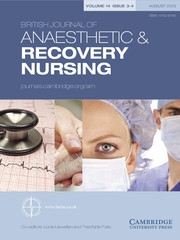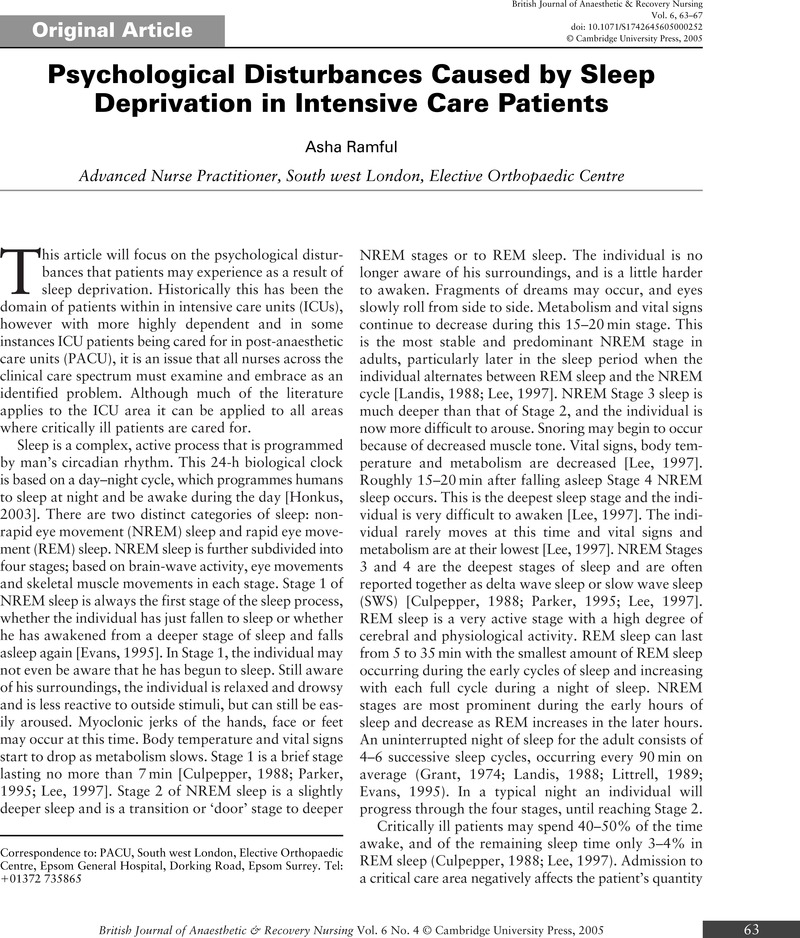Crossref Citations
This article has been cited by the following publications. This list is generated based on data provided by Crossref.
Coyer, Fiona M.
Wheeler, Margaret K.
Wetzig, Sharon M.
and
Couchman, Bronwyn A.
2007.
Nursing care of the mechanically ventilated patient: What does the evidence say?.
Intensive and Critical Care Nursing,
Vol. 23,
Issue. 2,
p.
71.
Åkerman, Eva
Fridlund, Bengt
Ersson, Anders
and
Granberg-Axéll, Anetth
2009.
Development of the 3-SET 4P questionnaire for evaluating former ICU patients’ physical and psychosocial problems over time: A pilot study.
Intensive and Critical Care Nursing,
Vol. 25,
Issue. 2,
p.
80.
Tembo, Agness C.
Parker, Vicki
and
Higgins, Isabel
2013.
The experience of sleep deprivation in intensive care patients: Findings from a larger hermeneutic phenomenological study.
Intensive and Critical Care Nursing,
Vol. 29,
Issue. 6,
p.
310.
Saeed, Adel M.
Galal, Iman H.
and
Shata, Aalaa K.
2014.
Evaluation of the psychological status of patients during and after weaning from mechanical ventilation.
Egyptian Journal of Bronchology,
Vol. 8,
Issue. 2,
p.
160.



